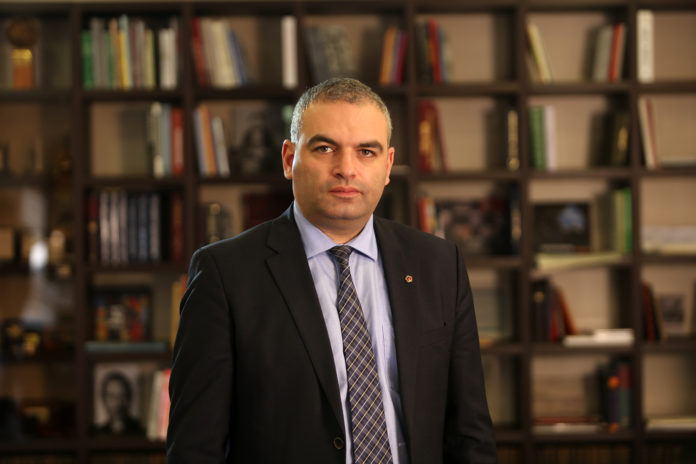By Hayk Demoyan
Special to the Mirror-Spectator
It seems that a pro-Stalinist flavor slowly is seeping through Armenia as official policy. Recent public discussion on television and social networks on the renaming of streets in Armenia, especially after the closure of the “Eclipse” exhibition hosted by the Home/Museum of Hovhannes Tumanyan in Yerevan, indicates dangerous developments in cultural and memory policies in Armenia. Shortly after halting the exhibition, Deputy Minister of Culture Arev Samuelian showed up with an official statement, saying that such an exhibition on Stalinist purges is “a little bit political.” What exactly does it mean to be “a little bit political” in the case of a museum exhibition, or what should be reviewed to allow it to be opened again? She did not specify. Instead, no clear and sound explanations were given as to why three weeks after its opening the ministry suddenly decided to stop it.
Those examples are not a simple illustration of the new identity crisis Armenia faces. This is not even a banal example of censorship through cultural policies in Armenia since its formal independence. It is rather bald evidence of mixed signals on Armenia’s future internal and external political preferences and the disastrous consequences to be expected.
My experience with neo-Stalinist initiatives are in part known and unknown over the last three years. Many remember the episode concerning the question of the erection of Anastas Mikoyan’s statue in downtown Yerevan. In 2013, being a member of the Yerevan city council (avagani), I voted against such a decision, though it passed almost unanimously. Under heavy pressure from the public and descendants of the victims of Stalinist crimes, the implementation of this decision however was halted, and the Mikoyan bust ready to be put in place in one of the central squares of Yerevan mysteriously disappeared.
Another example was in December 2016, when with the status of a member of the Public Council of the Republic of Armenia, I made a suggestion to the Ministry of Communication and Transport of the Republic of Armenia and Haypost to issue a special postal stamp for 2017 in memory of victims of Stalinist crimes. My offer was accepted and put on the list of stamps confirmed to be issued for this year. However, after I quit the abovementioned board due to corruption concerning Haypost (the private Armenian national postal company), I found out that my offer was simply removed from the list of preplanned stamp releases for 2017.
I assume that the decision of stopping the exhibition condemning Stalin period purges certainly was made on the highest level and is connected with the revival of the cult of Stalin in Russia. Quite recently, in June while responding to Oliver Stone, Russian President Vladimir Putin said that the “excessive demonization” of Soviet dictator Josef Stalin “is one means of attacking the Soviet Union and Russia.” Certainly such an exhibition in Armenia in some circles was regarded as an “attack on Russia,” and it would have been more honest to confess this in the Ministry of Culture rather than to engage in verbal gymnastics in order to justify such a decision before cameras.









